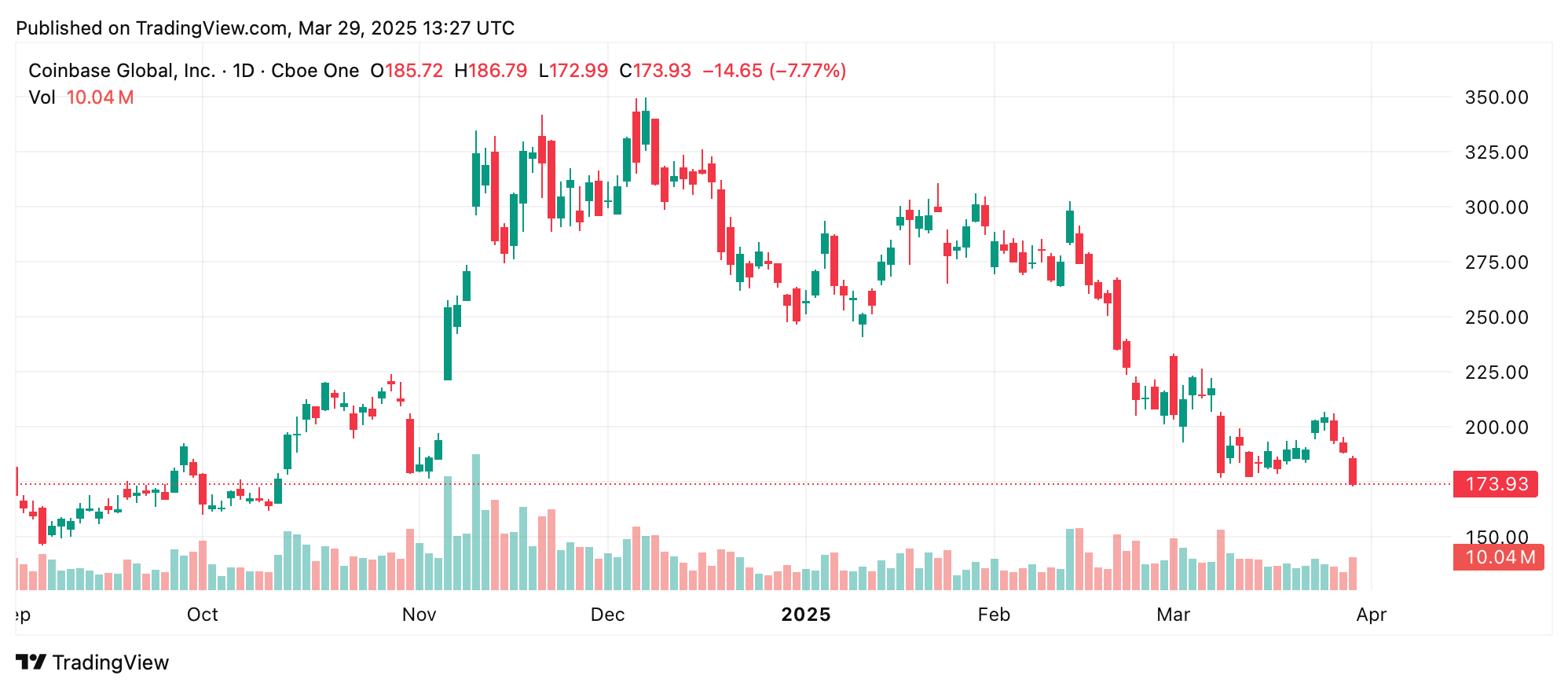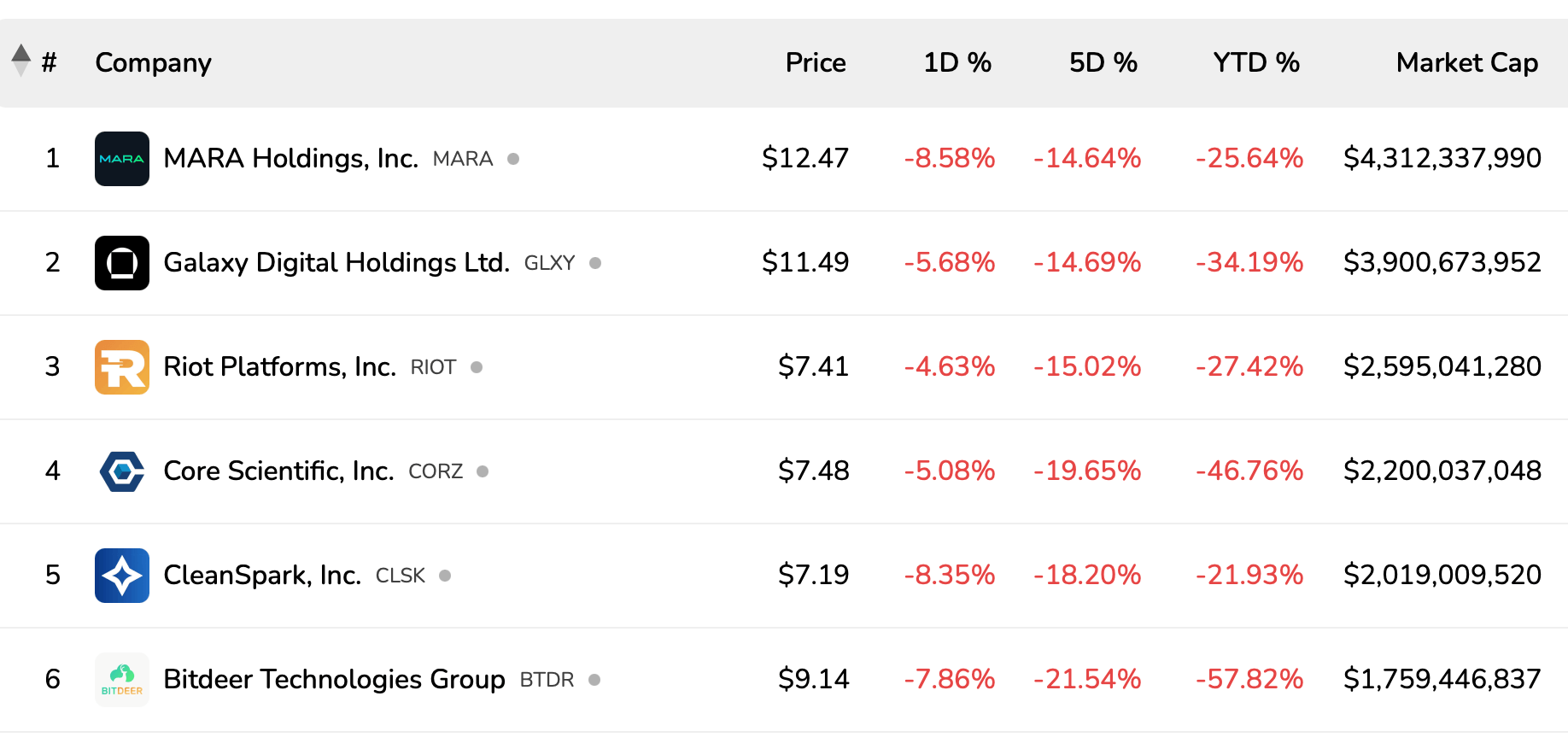
As the crypto economy has contracted by $150 billion since Monday, the downturn has notably impacted crypto stocks, with a significant portion of shares experiencing double-digit declines across the board.
Synchronized Selloffs: The Unbreakable Bond Between Crypto and Stock Markets
Crypto-related equities have faced substantial pressure this week, aligning with the broader market downturn that unfolded during the same period. By Friday, all four benchmark U.S. indices concluded the trading day in the red, shedding considerable value.
On March 24, the crypto economy was assessed at $2.82 trillion, but by March 29, it had diminished to $2.67 trillion. This contraction has weighed heavily on crypto stocks, with many bearing the full force of the decline.

Take Coinbase’s COIN, for example, which has declined by 11.93% against the U.S. dollar since Monday. The current market capitalization of COIN rests at $44.16 billion. Meanwhile, Strategy’s MSTR experienced an 8.46% drop over the span of five consecutive trading sessions. Publicly traded mining firms have also borne significant losses, with MARA Holdings’ shares retreating by 14.64%.

Galaxy Digital (GLXY) relinquished 14.69%, Riot Platforms (RIOT) fell by 15.02%, and Core Scientific (CORZ) dropped 19.65% during the previous week. Cleanspark (CLSK) saw its value diminish by 18.2% against the U.S. dollar, while Bitdeer (BTDR) plummeted by 21.54% across the same five-day stretch. Additionally, Iren Limited (IREN) and Applied Digital (APLD) witnessed declines ranging from 21.06% to 28.41%, respectively.
Crypto-related stocks often mirror the spot crypto economy due to their intrinsic ties to digital asset performance. Like crypto assets, these equities are heavily influenced by market sentiment and macroeconomic factors affecting cryptocurrencies. When spot prices decline, investor confidence wavers, prompting sell-offs in both crypto assets and associated stocks.
Additionally, many publicly traded firms hold significant crypto reserves, amplifying their vulnerability to market downturns. This interconnectedness fosters synchronized losses across both domains.
